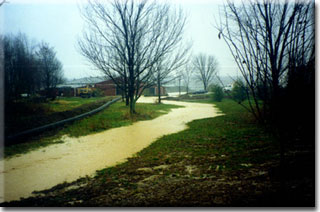 L-THIA
results can be used to minimize the water quality impacts of land use changes. The same land use
located on a different hydrologic soil type can have a
different impact. Because the amount of runoff
generated by different land uses is a function
of the hydrologic soil type and the land use,
relocating land uses based on the hydrologic soil
type can in some cases significantly reduce the
long-term impact of the development.
L-THIA
results can be used to minimize the water quality impacts of land use changes. The same land use
located on a different hydrologic soil type can have a
different impact. Because the amount of runoff
generated by different land uses is a function
of the hydrologic soil type and the land use,
relocating land uses based on the hydrologic soil
type can in some cases significantly reduce the
long-term impact of the development.
Locating land uses
that generate large amounts of runoff (e.g., commercial)
on soils that have naturally low infiltration
rates (Hydrologic Soil Group D) reduces the hydrologic
impact of the land use change. Covering soils
that already don't soak up much water with impervious
surface produces much less impact than covering
well-drained soils with an impervious surface.
Various land use
change scenarios and the corresponding change
in runoff and nonpoint source (NPS) pollutants
have been discussed here to help users interpret model results:


|